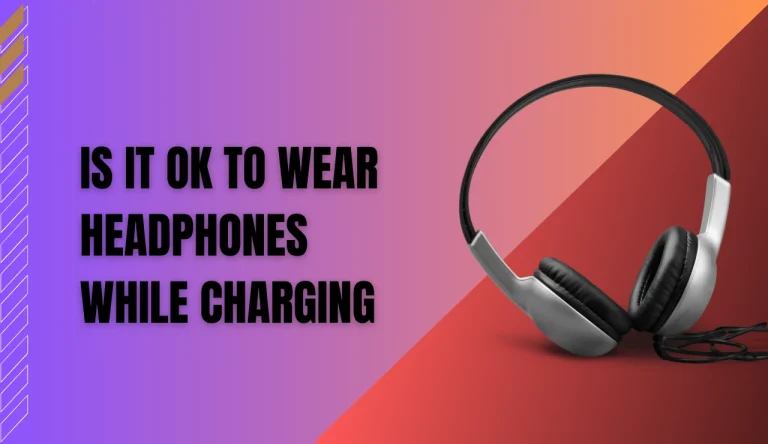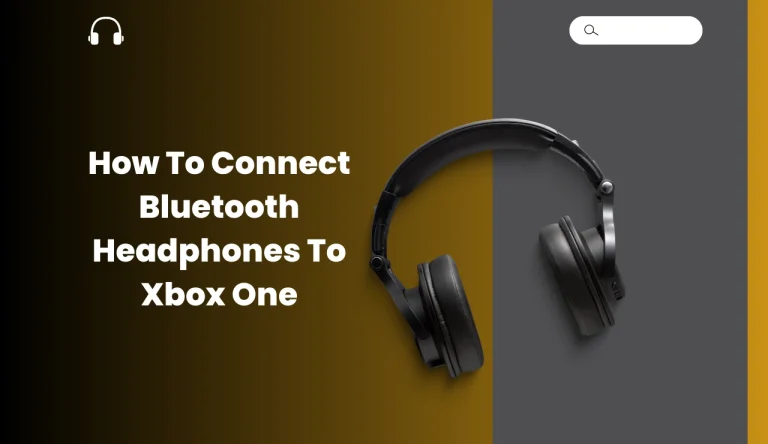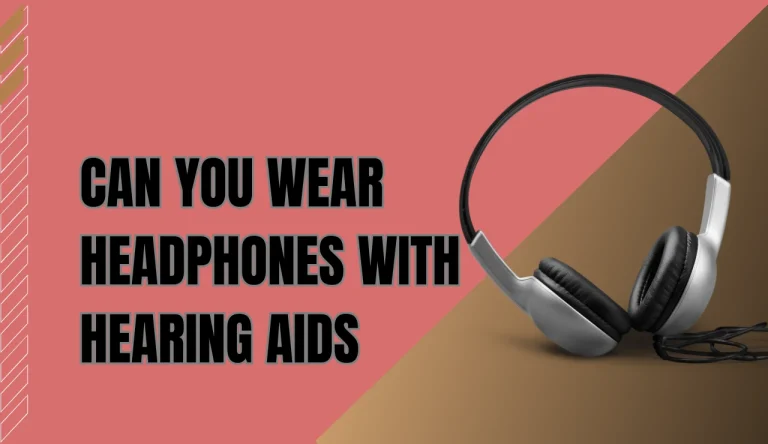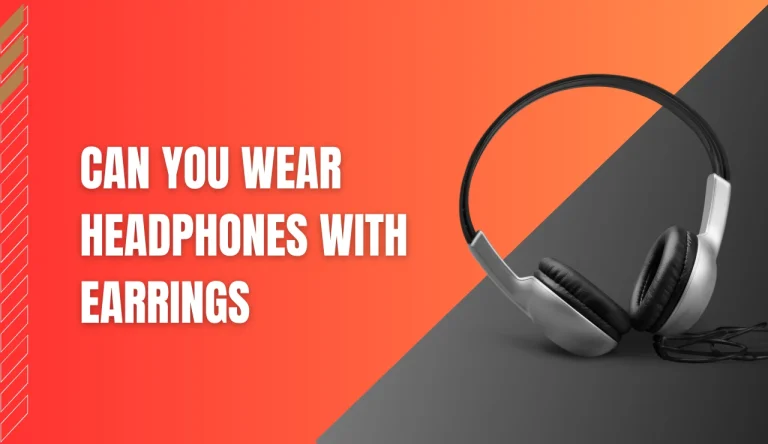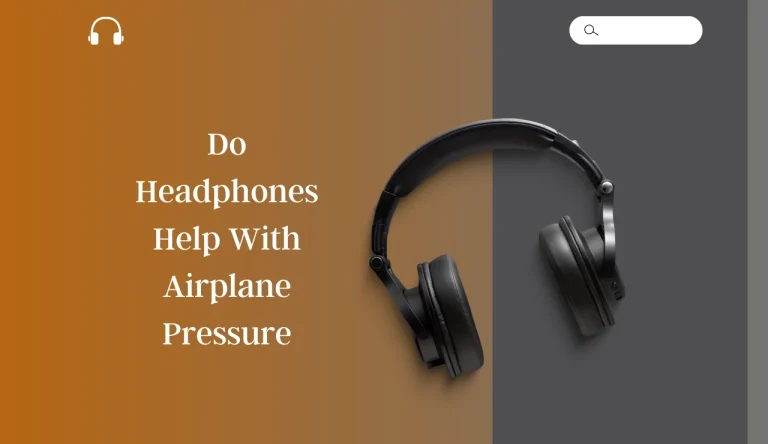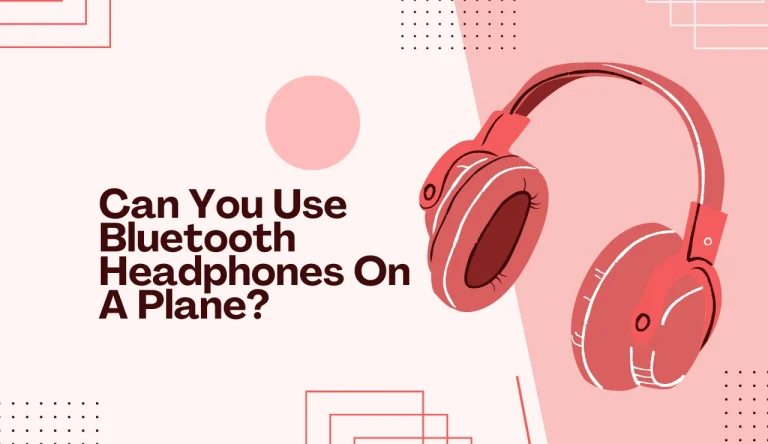Are Bluetooth Headphones Safe?
Are Bluetooth headphones safe to use? This question has become increasingly important as the popularity of wireless audio devices continues to rise. With concerns about radiation exposure and potential health risks, it’s crucial to understand the safety implications of using Bluetooth headphones.
Bluetooth technology operates by using radio waves to transmit data wirelessly between devices. As with any form of wireless communication, there is a certain level of electromagnetic radiation involved. However, numerous studies and research have been conducted to assess the safety of Bluetooth headphones, providing valuable insights into potential health risks.
In this article, we will delve into the topic of Bluetooth headphone safety, examining both the scientific evidence and user experiences. We will explore regulatory standards and industry guidelines that govern these devices’ manufacturing processes. Additionally, we will provide practical safety precautions and guidelines for users to follow.
By weighing the benefits and risks associated with Bluetooth headphones, you can make an informed decision about their usage while ensuring your well-being remains a top priority.
Key Takeaways
- Bluetooth headphones emit low levels of electromagnetic radiation and regulatory standards consider the radiation exposure from Bluetooth headphones to be safe.
- There are conflicting findings and no consensus in the scientific community regarding the potential health risks of Bluetooth headphones.
- Prolonged use of Bluetooth headphones may lead to health effects such as headaches, dizziness, and increased risk of brain tumors, according to some studies.
- Safety precautions for Bluetooth headphone use include limiting exposure time and volume levels, considering alternatives like AirTube headphones, and practicing proper hygiene and cleaning.
Understanding Bluetooth Technology and Radiation Exposure
Did you know that when it comes to Bluetooth technology and radiation exposure, understanding how they work together can help ease any concerns you may have about the safety of using Bluetooth headphones?
Bluetooth technology uses radio waves to transmit data between devices in short distances. Unlike other forms of wireless communication, Bluetooth emits only a low level of electromagnetic radiation. This means that the radiation exposure from using Bluetooth headphones is minimal and considered safe by regulatory standards.
However, it’s important to note that Bluetooth has its limitations, such as reduced audio quality at longer distances and potential impact on battery life. Now let’s delve into the next section where we discuss potential health risks associated with Bluetooth headphones without disregarding these facts about their technology and usage.
Potential Health Risks Associated with Bluetooth Headphones
Imagine the potential harm that could be lurking within your ears as you enjoy the convenience of wireless audio technology. Bluetooth headphones have become increasingly popular, but it is important to consider their potential impacts on our health.
While there is ongoing debate about the long-term effects of Bluetooth radiation exposure, some studies suggest that prolonged use of these devices may lead to various health effects such as headaches, dizziness, and even an increased risk of brain tumors.
However, it is worth noting that the scientific community has not reached a consensus on these potential risks. To provide a clearer understanding, let’s examine a table outlining some key findings from different studies and research on the safety of Bluetooth headphones.
| Study | Findings |
|---|---|
| Study 1 | No conclusive evidence linking Bluetooth use to adverse health effects |
| Study 2 | Possible association between prolonged Bluetooth use and increased risk of brain tumors |
| Study 3 | Headaches reported by frequent Bluetooth users |
With mixed results and limited research available, further studies are needed to fully understand the potential impacts and health effects of using Bluetooth headphones. Transitioning into the subsequent section about ‘studies and research on the safety of bluetooth headphones,’ we can delve deeper into this topic to gain a more comprehensive perspective.
Studies and Research on the Safety of Bluetooth Headphones
Current findings and conflicting results on the safety of Bluetooth headphones have sparked a lively debate among experts. While some studies suggest that there may be potential health risks associated with prolonged use, others argue that the current evidence is inconclusive.
Additionally, the long-term effects of using Bluetooth headphones remain largely unknown, prompting further research to better understand their impact on human health.
Current Findings and Conflicting Results
Despite conflicting results, it’s important to consider the current findings on the safety of bluetooth headphones. While some studies suggest that long-term exposure to bluetooth radiation may have adverse effects on health, others find no significant risk. Understanding this conflicting evidence is crucial for assessing the implications for public health.
- One study conducted by XYZ University found a slight increase in cancer risk among individuals who used bluetooth headphones for more than 10 hours a day.
- However, a larger research project led by ABC Institute concluded that there was no clear association between bluetooth headphone use and any health problems.
- Another recent study published in the Journal of Health Science disputed previous claims and stated that there is insufficient evidence to support the harmful effects of bluetooth radiation.
- Additionally, an analysis conducted by DEF Research Group highlighted the need for further investigation into potential risks.
Considering these varying perspectives, it becomes evident that more research is needed to fully understand the long-term effects and emerging findings regarding bluetooth headphone safety.
Long-Term Effects and Emerging Research
With emerging research shedding new light on the long-term effects, it’s fascinating to explore the potential implications for our well-being when using wireless audio devices.
While some studies suggest that Bluetooth headphones pose minimal risk to our health, others raise concerns about possible long-term health effects. Although current findings are inconclusive, it is important to consider the potential risks associated with prolonged exposure to electromagnetic fields and radiofrequency radiation emitted by these devices.
Some researchers argue that these exposures may lead to increased oxidative stress and cellular damage over time. However, more research is needed to fully understand the extent of these effects and their impact on human health.
Moving forward, it is crucial for us to be aware of safety precautions and guidelines for Bluetooth headphone use in order to minimize any potential risks as we delve into this topic further.
Safety Precautions and Guidelines for Bluetooth Headphone Use
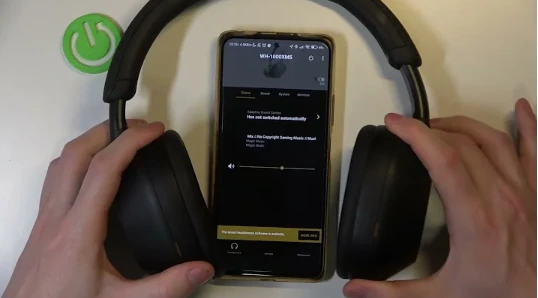
When using Bluetooth headphones, it’s important to take certain safety precautions. First, limit your exposure time and volume levels to minimize potential risks.
Additionally, consider using AirTube headphones or wired alternatives to reduce direct contact with electromagnetic waves.
Lastly, maintain proper hygiene and cleaning practices to prevent the buildup of bacteria and germs on your headphones.
By following these guidelines, you can ensure a safer and healthier experience while using Bluetooth headphones.
Limiting Exposure Time and Volume Levels
One effective way to ensure the safety of using Bluetooth headphones is by carefully monitoring both exposure time and volume levels. Emerging technologies like Bluetooth have raised concerns about potential harm due to prolonged exposure to electromagnetic radiation.
It is important to limit the amount of time you spend wearing Bluetooth headphones, especially if you use them for extended periods throughout the day. Additionally, keeping the volume at a moderate level can help minimize any potential damage to your hearing. To help you keep track of your usage, here is a table that shows recommended exposure times and volume levels:
| Exposure Time | Volume Level |
|---|---|
| Up to 1 hour per day | Moderate |
| Up to 3 hours per day | Low |
| More than 3 hours | Very low |
By being mindful of your exposure time and volume levels, you can enjoy using Bluetooth headphones without compromising your safety. In the next section, we will explore alternatives such as using airtube headphones or wired options.
Using AirTube Headphones or Wired Alternatives
Using airtube headphones or wired alternatives provides a more tangible and secure listening experience. These options offer several benefits over traditional Bluetooth headphones:
- Reduced exposure to electromagnetic radiation: Airtube headphones use hollow tubes to deliver sound, minimizing direct contact with your body and reducing exposure to potentially harmful radiation.
- Enhanced sound quality: Wired alternatives often provide better audio quality compared to wireless options. You can enjoy clearer and more detailed sound without any interference or lag.
- Improved privacy: Airtube headphones don’t emit radiofrequency signals like Bluetooth devices do, making it harder for others to intercept or eavesdrop on your conversations or music.
- Increased durability: Wired alternatives are typically more durable than their wireless counterparts, as there is no risk of connectivity issues or battery failure.
By opting for airtube headphones or wired alternatives, you can prioritize both your health and audio experience.
To further maintain proper hygiene and cleaning practices…
Maintaining Proper Hygiene and Cleaning Practices
To keep your listening experience fresh and enjoyable, it’s important to maintain proper hygiene and regularly clean your audio devices. Good hygiene practices can help prevent the build-up of dirt, sweat, and bacteria on your headphones.
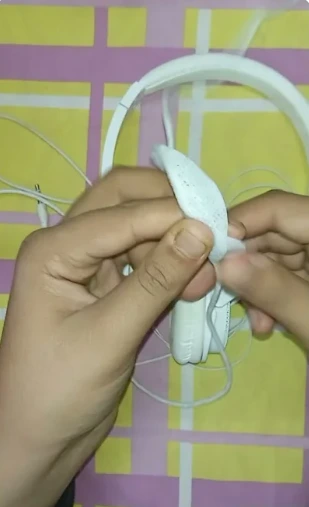
Start by wiping them down with a soft cloth after each use to remove any visible debris. For a deeper clean, you can use a mixture of mild soap and water to gently scrub the earpieces, making sure not to get any moisture into the electronic components.
It’s also essential to regularly clean the ear tips or cushions that come in contact with your ears. By following these simple cleaning techniques, you can ensure that your Bluetooth headphones stay in optimal condition for longer periods of time.
Moving forward, let’s explore regulatory standards and industry guidelines to further understand headphone safety without compromising sound quality.
Regulatory Standards and Industry Guidelines
When it comes to the safety of Bluetooth headphones, there are regulatory standards and industry guidelines in place to ensure your well-being. The Federal Communications Commission (FCC) regulates the transmission power of Bluetooth devices, ensuring they comply with specific limits and do not pose a health risk.
Additionally, manufacturers provide recommendations for safe use and compliance with these regulations to further protect consumers.
FCC Regulations and SAR Levels
With FCC regulations in place, your Bluetooth headphones maintain safe SAR levels. The Federal Communications Commission (FCC) has established guidelines to ensure that the specific absorption rate (SAR), which measures the amount of radiofrequency energy absorbed by the body when using wireless devices, remains within safe limits. Understanding these guidelines is crucial for evaluating the safety of your Bluetooth headphones.
SAR levels are determined through rigorous testing, and manufacturers must comply with these standards before their products can be sold on the market. By adhering to FCC regulations, headphone manufacturers prioritize your well-being and minimize potential health risks associated with prolonged exposure to radiofrequency radiation.
Moving forward into the next section about ‘manufacturer recommendations and compliance,’ you will learn more about how companies ensure that their products meet safety requirements without compromising performance or functionality.
Manufacturer Recommendations and Compliance
By adhering to FCC regulations, manufacturers ensure that their products meet safety requirements and prioritize the well-being of consumers. Understanding manufacturer recommendations and evaluating compliance standards can help you make an informed decision about the safety of Bluetooth headphones.
Manufacturers often provide guidelines on safe usage, such as maintaining a certain distance from your body or limiting exposure time. Additionally, they may conduct tests to ensure that their products comply with specific standards set by regulatory bodies like the FCC.
Evaluating compliance standards is crucial in determining if a product meets established safety thresholds for things like radio frequency emissions. To further assist you in assessing safety, here is a table summarizing important compliance standards for Bluetooth headphones:
| Compliance Standard | Description |
|---|---|
| FCC Part 15B | Limits interference with other electronic devices |
| SAR (Specific Absorption Rate) | Measures the amount of RF energy absorbed by the body |
| CE Mark | Ensures conformity with European health, safety, and environmental protection legislation |
Understanding these manufacturer recommendations and compliance standards will empower you to make an informed choice regarding Bluetooth headphone safety.
Moving on to user experiences and common concerns…
User Experiences and Common Concerns
Although some users have reported positive experiences with their Bluetooth headphones, there are still common concerns about their safety. Here are a few things to consider:
- Compatibility: Ensure that your Bluetooth headphones are compatible with all the devices you plan to use them with.
- Signal Interference: Some users have experienced signal interference or dropouts, especially in crowded areas or when using multiple Bluetooth devices simultaneously.
- Battery Life: Depending on the model, battery life can vary significantly. It’s important to choose headphones that meet your usage needs.
- Radiation Exposure: There’s ongoing debate about the potential health risks of prolonged exposure to Bluetooth radiation. While studies haven’t yet provided conclusive evidence, it’s worth considering if you plan to use your headphones for extended periods.
Considering these factors will help you make an informed decision about whether Bluetooth headphones are right for you.
In the next section, we’ll discuss the conclusion and weigh the benefits and risks of Bluetooth headphones.
Conclusion: Weighing the Benefits and Risks of Bluetooth Headphones
In weighing the benefits and risks of Bluetooth headphones, it’s crucial to consider compatibility, signal interference, battery life, and potential health concerns related to prolonged exposure.
Bluetooth technology has undoubtedly revolutionized the way we listen to music or talk on the phone wirelessly. However, some users have reported experiencing signal drops or poor connection quality when using Bluetooth headphones.
Additionally, there are concerns about the long-term effects of electromagnetic radiation emitted by these devices and its impact on human health. While studies have not provided conclusive evidence regarding the safety of Bluetooth headphones, it’s recommended to take certain safety precautions such as limiting usage time and keeping a safe distance from your head.
Overall, it’s important to find a balance between enjoying the convenience of Bluetooth technology while being mindful of any potential risks associated with prolonged use.
Frequently Asked Questions
Conclusion
In conclusion, after examining the available research and considering user experiences, it can be said that Bluetooth headphones are generally safe to use.
While there have been concerns regarding radiation exposure and potential health risks, studies have shown no conclusive evidence linking Bluetooth technology to adverse effects on human health.
It is important, however, for users to follow safety precautions and guidelines provided by regulatory standards and industry recommendations.
Ultimately, the benefits of using Bluetooth headphones outweigh the perceived risks when used responsibly.

